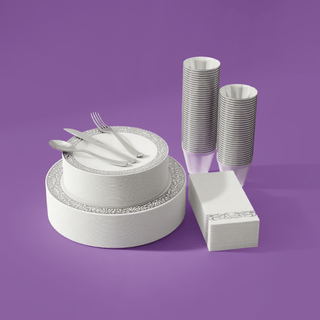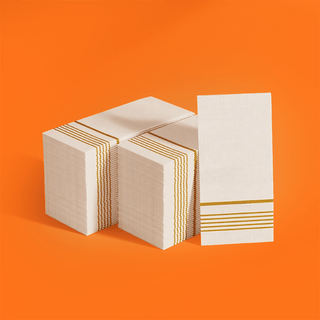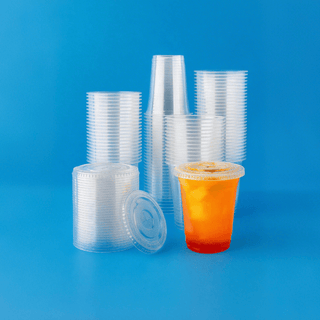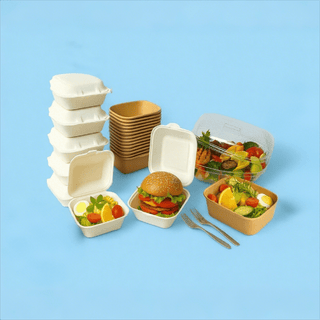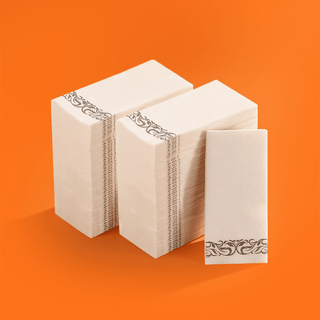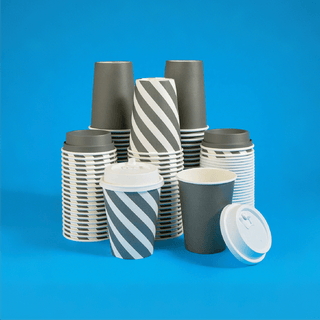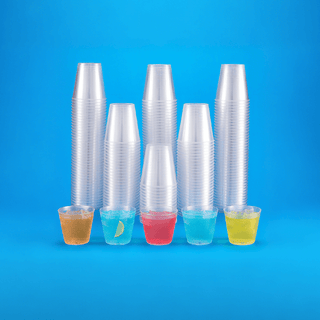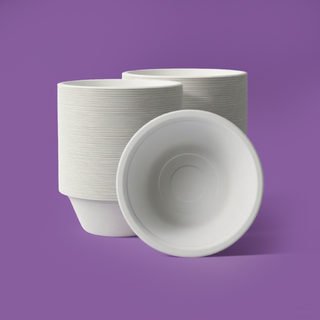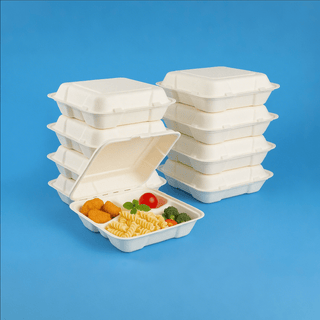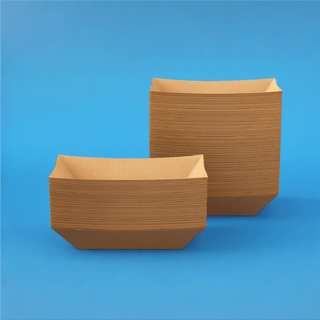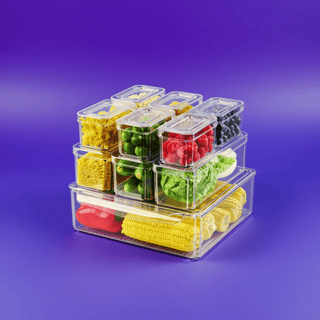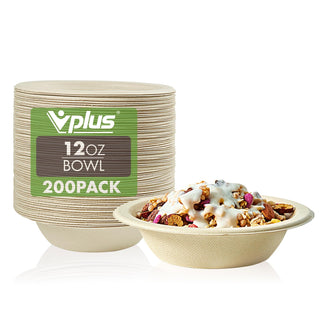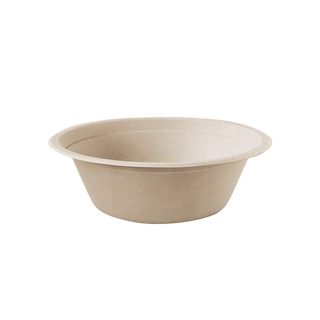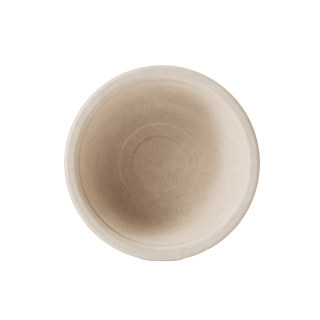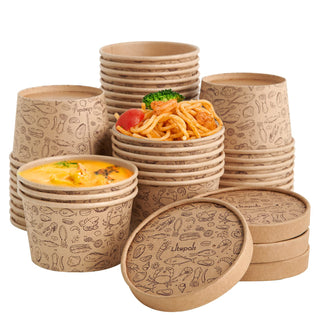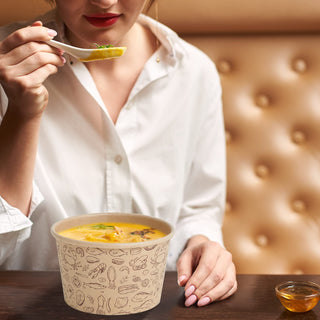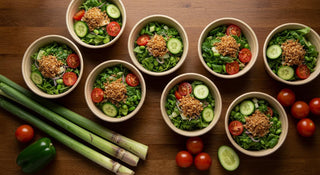
Are Sugarcane Bowls Worth It?
Yes, for many people, sugarcane bowls are worth it. Their value depends on prioritizing eco-friendly performance for single-use needs. Imagine planning a party. You need a sturdy disposable salad bowl that will not leak. This is where sugarcane bagasse tableware shines. The biodegradable tableware market is growing at a rate of 6.0% annually. This shows a clear shift away from traditional plastics.
Key Takeaways
-
Sugarcane bowls are a good choice for parties. They are strong and do not leak. They are also good for the Earth.
-
These bowls are safe for the microwave and freezer. They can hold both hot and cold foods well. This makes them very useful.
-
Sugarcane bowls are made from natural plant fibers. They do not have bad chemicals. This makes them safe for food.
WHY CHOOSE SUGARCANE BAGASSE TABLEWARE?
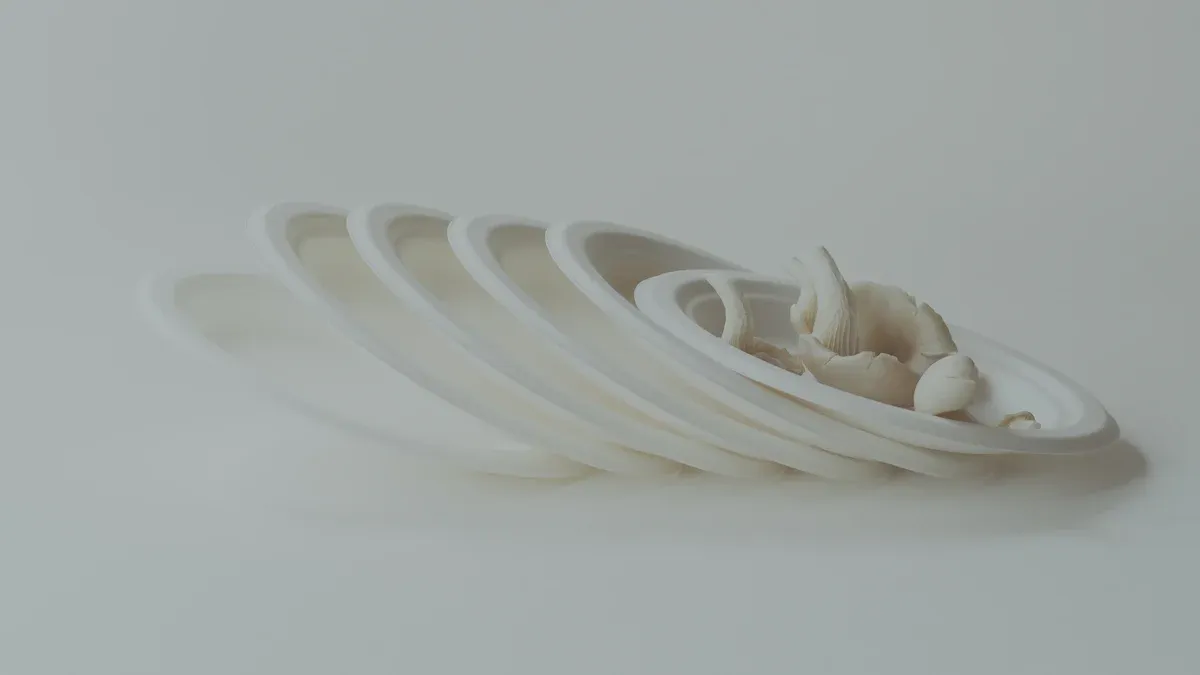
Choosing the right tableware can make any event a success. Sugarcane bagasse tableware offers a fantastic combination of performance, style, and sustainability. People select these products for many compelling reasons. They provide a smart solution for modern hosting needs. Let's explore the advantages of bagasse plates and bowls.
A TOP SUSTAINABLE ALTERNATIVE
Sugarcane bagasse tableware is a top sustainable alternative to plastic and paper. It comes from bagasse, a waste byproduct of sugarcane processing. This practice promotes a circular economy. It repurposes agricultural waste that might otherwise be burned. The production process has a smaller environmental footprint. It uses less energy and water than paper manufacturing. Making 1,000 kilograms of paper pulp requires 5,000 kilograms of wood. The same amount of bagasse pulp needs only 1,500 kilograms of bagasse. This helps prevent deforestation.
Sugarcane is a fast-growing, renewable resource. It renews in just 10-18 months. The plant also acts as a carbon sink. It absorbs more carbon dioxide during its growth than its production releases. This makes sugarcane bagasse tableware an excellent eco-friendly choice.
STRONG, DURABLE, AND LEAK-RESISTANT
Strength is a key feature of sugarcane bagasse tableware. These bowls and plates are sturdy and reliable. They resist oil and soaking, so users do not need to worry about leaks or sogginess. This makes them perfect for serving saucy dishes or a hearty disposable salad bowl. When holding hot liquids, sugarcane bowls maintain their integrity better than foam, which can crack. Jolly Chef bowls are designed to handle generous portions. This durability ensures a mess-free dining experience for guests.
SAFE FOR MICROWAVE AND FREEZER USE
Convenience is essential for disposable tableware. Sugarcane products deliver on this need. They are safe for use in both the microwave and the freezer. Lab tests confirm that bagasse bowls can withstand temperatures up to 120°C (248°F). This allows for quick and easy reheating of leftovers. Their structure remains stable during freeze-thaw cycles. This makes them a versatile option for food preparation and storage.
MADE FROM 100% NATURAL SUGARCANE
Jolly Chef's compostable bowls are crafted from 100% natural sugarcane fibers. The manufacturing process is straightforward and clean.
-
Collection: Raw bagasse is collected from sugar mills.
-
Pulping: The fibers are cleaned and mixed with water to create a pulp. This step uses fewer chemicals than wood pulping.
-
Molding: The pulp is poured into molds. Heat and pressure shape it into bowls and plates.
-
Finishing: The products are dried and trimmed. They undergo quality checks to ensure they meet high standards.
This process transforms a simple agricultural byproduct into high-quality, functional tableware.
SAFE, NON-TOXIC, AND ODOR-FREE
Food safety is a top priority. Sugarcane bagasse tableware is naturally non-toxic and free from harmful chemicals like PFAS. The raw sugarcane fiber has no aroma or flavor. A thorough cleaning process removes impurities and any remaining plant components that could cause odors. Many reputable brands, including Jolly Chef, seek certifications to prove their products are safe.
-
FDA Approval: Ensures the material is safe for food contact.
-
BPI Certification: Confirms the product is compostable in industrial facilities.
These standards give consumers peace of mind. They know they are using a safe and clean product.
VERSATILE FOR HOT AND COLD FOODS
One of the greatest advantages of bagasse plates and bowls is their versatility. They perform exceptionally well with both hot and cold foods. They can safely hold hot foods at temperatures up to 220°C (428°F) for 20 minutes. This makes them ideal for serving everything from hot soup to chili. For cold items like ice cream or a disposable salad bowl, the material's breathable nature prevents condensation from forming on the outside. This versatility allows you to Host Like a Pro with Jolly Chef for any type of meal or event. The impressive environmental benefits, combined with superior performance, highlight why this sustainable alternative is a worthwhile choice. Its biodegradability means the products break down quickly, returning to the earth in just 45 to 90 days in a commercial composting facility.
POTENTIAL DRAWBACKS TO CONSIDER
While sugarcane bagasse tableware offers many benefits, consumers should be aware of some potential drawbacks. Understanding these points helps people make an informed decision. These factors are important for anyone considering a switch to eco-friendly disposables.
HIGHER UPFRONT COST
A primary consideration involves the price. The initial expense is one of the key disadvantages of bagasse plates and bowls compared to traditional options. Eco-friendly materials often cost more to produce. The table below shows the average price difference per unit.
|
Material Type |
Average Price Per Unit |
|---|---|
|
Sugarcane (Bagasse) |
$0.055–$0.065 |
|
PLA-lined Kraft Paper Bowls |
$0.045–$0.055 |
|
Plastic (PS clamshell box) |
$0.035–$0.045 |
However, this price gap is closing. In 2018, eco-tableware could cost 40–60% more than plastic. By 2025, that difference has shrunk to 10–15% for single units and even less for bulk orders. Mass adoption and better manufacturing are making sugarcane products more affordable. This trend suggests that cost will become less of a factor over time, but it remains one of the current disadvantages of bagasse plates.
REQUIRES PROPER COMPOSTING
The environmental benefit of a compostable bowl depends entirely on its disposal. This requirement is one of the most significant disadvantages of bagasse plates. These items do not break down in a landfill due to the lack of oxygen. They also may not decompose effectively in a typical backyard compost pile.
Note: Effective composting of bagasse requires specific conditions. The compost pile temperature must reach an optimal range of 55 to 70 degrees Celsius (131 to 158 degrees Fahrenheit). Proper moisture and aeration are also critical for microorganisms to break down the fibers.
Most users will need access to a commercial or industrial composting facility. Finding one can be a challenge, which is another of the disadvantages of bagasse plates. Luckily, several online tools can help:
-
The Sustainable Packaging Coalition (SPC) offers interactive maps of U.S. composting facilities.
-
Websites like Find A Composter allow users to search for local centers by state.
-
State-level resources, such as CalRecycle in California, provide searchable databases of compost producers.
Without access to these facilities, the eco-friendly advantage is lost.
LIMITED SHELF LIFE IN STORAGE
Unlike plastic, bagasse products have a limited shelf life. This is one of the practical disadvantages of bagasse plates for those who buy in bulk. Unused sugarcane bagasse tableware can maintain its quality for up to one year. However, this depends heavily on storage conditions.
To maximize shelf life, users must store the bowls in a cool, dry place away from direct sunlight. Exposure to moisture or high heat can cause the natural fibers to deteriorate and weaken prematurely. For event planners or families stocking up, managing inventory and storage space becomes an important task.
NOT FOR LONG-TERM FOOD STORAGE
Bagasse bowls are designed for serving, not for long-term food storage. Their material is breathable and will begin to break down over time, especially when in contact with food. This limitation is the final of the main disadvantages of bagasse plates.
A scientific study showed how different food types affect the material.
-
It found that acidic foods, simulated by 4% acetic acid, significantly accelerated the degradation of
sugarcanefibers. -
This acidic exposure caused the release of a high number of microparticles.
-
Oily foods, on the other hand, did not have the same accelerating effect.
This means storing a tomato-based soup or a vinaigrette-dressed salad in a bagasse bowl for more than a few hours is not ideal. The bowls are perfect for a meal or an event but are not a substitute for sealed food storage containers.
THE VERDICT: ARE JOLLY CHEF BOWLS FOR YOU?
Deciding on the right tableware involves weighing benefits against drawbacks. Jolly Chef's sugarcane bowls offer a clear value proposition for specific users. This final summary helps you determine if they fit your needs.
CHOOSE THEM FOR PARTIES & GATHERINGS
Hosts planning parties, family gatherings, or catered events will find these bowls ideal. Their strength and leak-resistance handle large crowds and varied menus with ease. Families and event planners appreciate the convenience of disposable products. Jolly Chef provides this convenience without sacrificing style or performance. The elegant design of this sugarcane bagasse tableware elevates any event, making cleanup simple and quick. For these users, the combination of durability and eco-conscious design makes the bowls a smart investment.
PERFECT AS A DISPOSABLE SALAD BOWL
These bowls excel in specific roles. Their sturdy construction makes them a perfect disposable salad bowl. They hold dressings without becoming soggy, ensuring a fresh and crisp meal. They are also great for serving other messy foods like chili, soup, or ice cream.
Tip: Use them for single-meal occasions where performance is key. Their ability to handle both hot and cold items makes them a versatile choice for any menu, from a summer picnic to a winter festival. A reliable disposable salad bowl is essential for any large gathering.
AVOID IF BUDGET IS THE ONLY PRIORITY
Shoppers focused solely on the lowest price might prefer other options. Traditional plastic or basic paper products often have a lower upfront cost. While the price gap is shrinking, sugarcane bowls still represent a premium choice. The value of Jolly Chef bowls lies in their superior performance and environmental benefits, not just their price tag.
AVOID IF YOU LACK COMPOSTING OPTIONS
The eco-friendly advantage of these bowls depends on proper disposal. Users without access to a commercial composting facility will not realize the product's full environmental benefit. The bowls do not break down correctly in landfills. People living in areas without municipal composting programs should consider this limitation before purchasing.
Sugarcane bowls from brands like Jolly Chef are an excellent choice for many. This eco-friendly sugarcane bagasse tableware offers superior strength. A widespread shift to compostables reduces landfill waste and returns nutrients to the soil. While they have a higher cost, many environmentally conscious consumers are willing to pay more for sustainability.
Choosing quality and sustainability makes any event a success.
FAQ
What is sugarcane bagasse?
Sugarcane bagasse is the dry, fibrous pulp remaining after juice extraction from sugarcane stalks. Jolly Chef repurposes this agricultural byproduct. The brand transforms this material into strong, eco-friendly tableware. ♻️
Are sugarcane bowls better than paper bowls?
Yes, sugarcane bowls offer superior strength and durability. They resist oil and moisture better than most paper bowls. This quality prevents sogginess, making them a reliable choice for both hot and cold foods. 🥣
Can you microwave Jolly Chef sugarcane bowls?
Yes, you can. These bowls are safe for short periods in the microwave. This feature adds convenience for reheating leftovers. They are perfect for quick warming. 🔥
How do you compost sugarcane bowls?
Sugarcane bowls decompose best in a commercial composting facility. These facilities provide the ideal heat and conditions for the material to break down. The process allows the bowls to return to the soil quickly.

